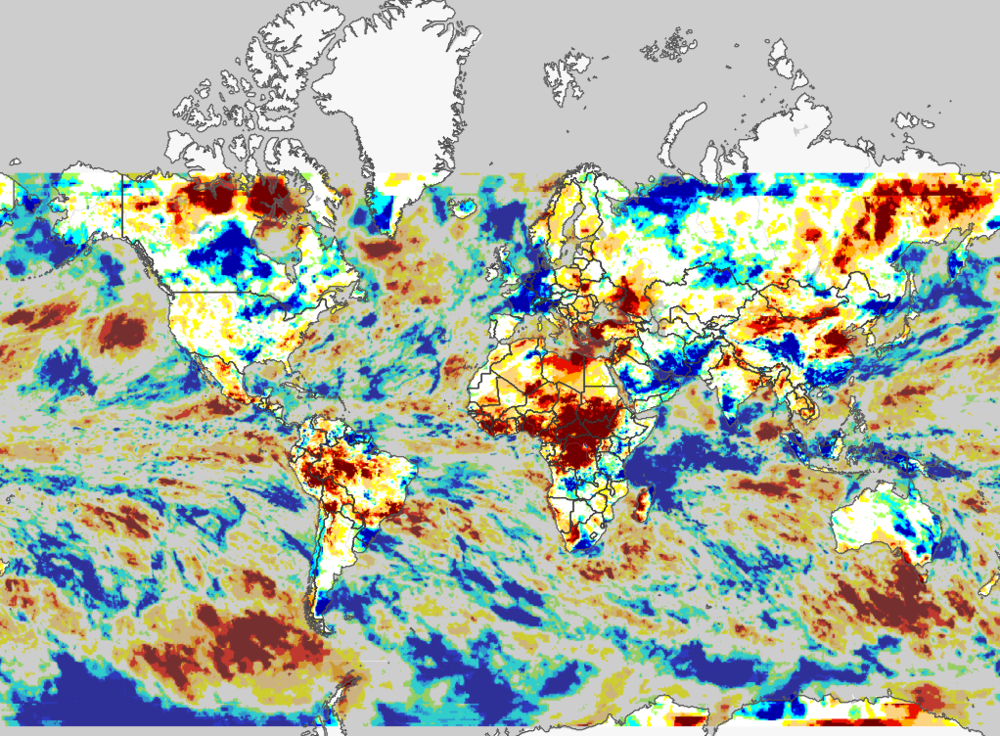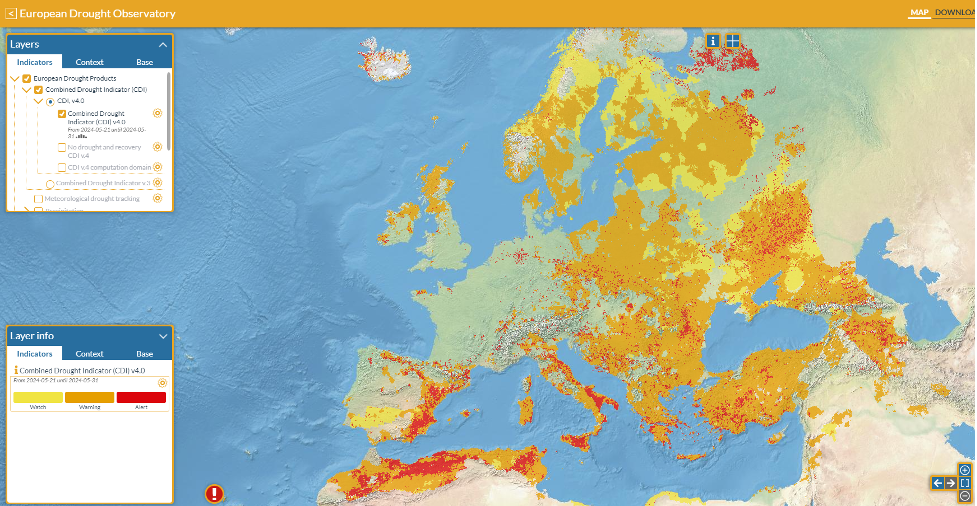May 2024 global drought report highlights urgent need for action to protect ecosystems, agriculture and livelihoods

The global drought scenario in May 2024 underscores the urgent need for comprehensive monitoring and mitigation efforts to address the widespread and multifaceted impacts of drought conditions on ecosystems, agriculture and human livelihoods.
In May 2024, wet conditions brought limited relief to some drought-hit areas, especially in Canada, Southwest Asia and southern parts of Central America, but the month was dry in parts of Africa, Australia, South America, northern and eastern Europe, and South Asia. The precipitation that fell was not enough to make up for months, even years, of deficient precipitation.
The unusually hot temperatures in May increased evapotranspiration (the sum of all processes by which water moves from the land surface to the atmosphere via evaporation and transpiration), which exacerbated drought conditions.
The impact of drought felt around the world
Low soil moisture and groundwater levels continue to plague significant agricultural areas, especially in the Americas, Africa, eastern Europe and parts of Asia. The GEOGLAM Crop Monitor identified critical agricultural threats in these regions. FEWSNet highlighted ongoing food insecurity in Central and South America, Southwest Asia, and much of Africa.
Meanwhile, the UN Office for the Coordination of Humanitarian Affairs reported severe food and water shortages in Zimbabwe, affecting half the population. Project Hope noted similar crises in Zambia, while the World Meteorological Organization documented rising hunger and disease in Latin America due to extreme weather. The United Nations warned of significant impacts on southern Africa's food production.
A study in Nature Communications revealed that Brazil's Cerrado is experiencing its worst drought in 700 years, and a new study warned of critical stress in the Amazon rainforest. However, the Panama Canal showed signs of recovery from prolonged drought impacts, though full capacity is not expected until early 2025.
Africa
Southern Africa faced the driest May and second driest January-May period on record, while the entire continent experienced its fourth driest May. Persistent dryness affected the Maghreb region and parts of southern Africa.
Satellite observations revealed stressed vegetation across the continent, with particularly low soil moisture and groundwater levels in the Maghreb and central to southern Africa. The African Flood and Drought Monitor reported that 28% of Africa was in drought by the end of May, affecting 14 countries.
Europe
Much of Europe experienced warmer than normal temperatures in May, with dry conditions across eastern Europe, Scandinavia and the Iberian Peninsula. Drought warnings were issued for eastern and northern Europe, with severe drought in the southeastern Mediterranean basin. The warm temperatures exacerbated evaporation rates, intensifying drought conditions. Long-term data indicated persistent dryness from the Mediterranean to north-central Europe, with the last year being the warmest on record for the continent.

Asia
May saw dry conditions in western Russia, Siberia, eastern China, and northern India and Pakistan, while Southwest Asia was wetter than normal. Over longer time scales, dryness intensified and expanded in Southwest Asia and northern India.
Asia's temperatures have been unusually warm, ranking second warmest for recent periods. The India Drought Monitor indicated drought in 24.1% of the nation by the end of May. The drought also affected parts of Micronesia and the Polynesian islands, as shown in the NIWA Island Climate Update.

Source: India Drought Monitor
Australia and Oceania
Tasmania, northeast and southern Australia, and western Australia, along with much of New Zealand, were drier than normal in May. Persistent dryness was observed in these regions over various time scales. The Australian Bureau of Meteorology reported low streamflows and water storage levels in parts of Australia, with significant soil moisture deficits. New Zealand's central regions were also in drought by the end of May, according to the New Zealand Drought Monitor.
South America
May brought significant dryness to Brazil, Argentina, Chile, and parts of Paraguay, Peru, and Venezuela. Despite some beneficial April rains, long-term dryness persisted across much of the continent. South America's temperatures have been persistently warm, with recent periods ranking as the warmest on record.
This warmth increased evapotranspiration, worsening drought conditions. Satellite data showed extensive areas of dry soil and low groundwater, particularly in Brazil and Argentina. Drought conditions were confirmed by multiple sources including the Brazilian Drought Monitor and the Southern South America Drought Information System.
North America
Drier than normal conditions were reported in Mexico, southern Florida, parts of the US, and Canada, as well as the northern half of Central America and parts of the Caribbean. Warmer than normal temperatures dominated much of the last year.
The North American Drought Monitor highlighted drought in the northern Rockies, southern Florida, central and southern Plains, and much of Mexico. By the end of May, drought affected 19% of North America's area and 25.8% of its population, as detailed in the North American Drought Monitor.
This information is based on global drought indicators available at the Global Drought Information System (GDIS) website, and media reports summarized by the US National Drought Mitigation Center. A more detailed report is available from the GDIS Global Drought Narrative.